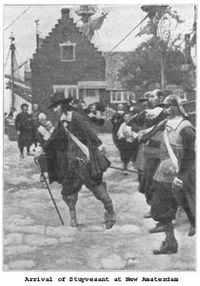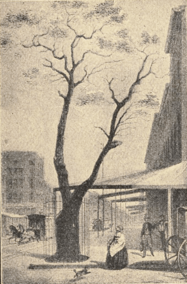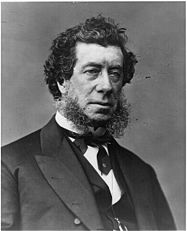Peter Stuyvesant facts for kids
Quick facts for kids
Peter Stuyvesant
|
|
|---|---|
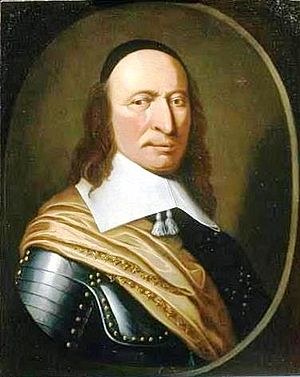
Painting attributed to Hendrick Couturier c. 1660
|
|
| 7th Director of New Netherland | |
| In office 1647–1664 |
|
| Preceded by | Willem Kieft |
| Succeeded by | Richard Nicolls (as Governor of the Province of New York) |
| Personal details | |
| Born | c. 1610 Peperga, Friesland, Netherlands |
| Died | August 1672 (age 61/62) Manhattan, Province of New York |
| Resting place | St. Mark's Church in-the-Bowery |
| Spouse |
Judith Bayard
(m. 1645) |
| Relations | See Stuyvesant family |
| Children | Balthasar Lazarus Stuyvesant Nicolaes Willem Stuyvesant |
| Parents | Balthazar Jansz Stuyvesant Margaretha van Hardenstein |
| Signature |  |
Peter Stuyvesant ((Catalan) 1610 – August 1672) was an important Dutch leader. He was the last Director-General of the New Netherland colony. This was a Dutch settlement that later became parts of New York and New Jersey. He led the colony from 1647 until 1664.
Stuyvesant helped New Netherland grow a lot. He expanded the settlement of New Amsterdam, which is now New York City. His projects included the wall on Wall Street and the canal that became Broad Street. He also helped build Broadway. Stuyvesant was a member of the Dutch Reformed Church. He did not always allow other religions to build churches or worship freely.
Contents
Peter Stuyvesant's Early Life
Peter Stuyvesant was born around 1610. His birthplace was in Peperga or Scherpenzeel, Friesland, in the Netherlands. His father, Balthasar Stuyvesant, was a minister. Peter grew up in these areas.
His Career Begins
When he was 20, Stuyvesant went to the University of Franeker. He studied languages and philosophy there. After a few years, he was expelled from the school. His father then sent him to Amsterdam.
In Amsterdam, Stuyvesant joined the Dutch West India Company. In 1630, he became a business agent for the company. He worked on a small island near Brazil. Later, he moved to Pernambuco in Brazil. In 1638, he moved again to Curaçao. This was the main Dutch naval base in the West Indies.
Just four years later, at age 30, he became the acting governor of Curaçao. He also governed Aruba and Bonaire. He held this position until 1644.
In April 1644, Stuyvesant led an attack on the island of Saint Martin. The Spanish had taken this island from the Dutch. Peter believed the Spanish had few soldiers. When he raised the Dutch flag, the Spanish fired. A cannonball hit Peter, and he lost his leg. The Dutch lost the battle.
Stuyvesant went back to the Netherlands to recover. His right leg was replaced with a wooden peg. People called him "Peg Leg Pete" or "Old Silver Nails." This was because his wooden leg had silver nails. The West India Company saw his injury as a great sacrifice. Stuyvesant believed God had saved him for important work.
In May 1645, the company chose him for a new role. He would replace Willem Kieft as Director-General. This meant he would lead the New Netherland colony. This colony included New Amsterdam, which is now New York City.
Leading New Netherland
Stuyvesant had to wait for his new job to be approved. During this time, he married Judith Bayard in 1645. She was the daughter of a minister from Breda. They left Amsterdam in December 1646. After stopping in Curaçao, they arrived in New Amsterdam in May 1647.
The previous leader, Willem Kieft, had left the colony in bad shape. Many villages were ruined after his wars. Many people had left, and only a few hundred men could fight. Kieft had also become very rich during his time in office.
Stuyvesant was sure that fixing New Netherland was his mission. He told the people, "I shall govern you as a father his children." He started to rebuild the colony. In September 1647, he created the Nine Men. This was a group of colonists who advised him. They helped him work with the people and improve the colony.
In 1648, Stuyvesant had a conflict with Brant Aertzsz van Slechtenhorst. This person managed Rensselaerwijck, a large land area. Stuyvesant said he had power over this area. Van Slechtenhorst disagreed. Stuyvesant sent soldiers to enforce his orders. This led to the founding of a new settlement called Beverwijck.
Challenges and Changes
New Netherland faced many outside problems. The colony had too few people, and they often argued. The Dutch West India Company did not send much military help. Stuyvesant often lost in these conflicts. The biggest problem was economic competition with England. There were also small fights with Native American tribes.
Defending the large colony with few people was hard. Stuyvesant's biggest success was against nearby Swedish colonies. He defeated them and took over their land in 1655. Relations with the English colony of Connecticut were difficult. They argued over land in the Connecticut valley and on eastern Long Island.
The Treaty of Hartford in 1650 was not good for the Dutch. Stuyvesant gave up claims to the Connecticut Valley. He only gained a small part of Long Island. English settlers ignored the treaty and moved into the Hudson Valley. They caused trouble for Stuyvesant.
In 1664, England decided to take over New Netherland. The Dutch colonists refused to fight. This forced Stuyvesant to surrender. This showed that the colony was weak due to internal problems and strong outside pressures. The Company cared more about profits than military support.
Expanding the Colony
Stuyvesant argued with Theophilus Eaton, the governor of the English New Haven Colony. They disagreed about the border between their colonies. In September 1650, they met in Hartford, Connecticut. They signed the Treaty of Hartford to set the border. The Nine Men were unhappy with the border. They said Stuyvesant had given away too much land. Stuyvesant then threatened to get rid of the council.
A new plan for city government was made in the Netherlands. The name "New Amsterdam" was officially declared on February 2, 1653. Stuyvesant gave a speech, saying his power would not change.
Stuyvesant was ordered to return to the Netherlands. But the order was soon canceled. Stuyvesant then prepared for an attack. He ordered citizens to dig a ditch from the North River to the East River. They also built a fort.
In 1653, representatives from each village demanded changes. Stuyvesant told them to leave. He said, "We get our power from God and the company, not from a few uneducated people."
In the summer of 1655, he sailed to the Delaware River. He had seven ships and about 700 men. He took over the colony of New Sweden. It was renamed "New Amstel." While he was away, Native Americans attacked Pavonia. This was during the "Peach War" on September 15, 1655.
In 1657, the Dutch West India Company told Stuyvesant they could not send all the workers he wanted. They said he would have to buy enslaved people. During this time, New York City became a place where enslaved people tried to escape. Neighboring colonies like Connecticut and Maryland encouraged Dutch enslaved people to run away. In 1650, Governor Stuyvesant threatened to free Maryland's enslaved people. This was unless Maryland stopped helping runaways from the Dutch colony.
In 1660, Stuyvesant said that teaching young people early was very important. By 1661, New Amsterdam had one grammar school and two free elementary schools. It also had 28 licensed schoolteachers.

Religious Freedom
Stuyvesant did not allow complete religious freedom. He strongly believed in the Dutch Reformed Church. In 1657, he would not let Lutherans organize a church. He also made a rule against them worshiping in their own homes. The directors of the Dutch West India Company told him to change this rule. They said more tolerance would lead to more trade and profit.
Religious freedom was tested again when Stuyvesant did not want Jewish refugees from Dutch Brazil to settle permanently. He wanted Jews to "depart" from the colony. He wrote that he hoped this "deceitful race" would not "infect and trouble this new colony." He called Jews a "repugnant race." He worried that if Jews had the same freedoms as in Holland, other groups like Roman Catholics might come.
The company directors again made Stuyvesant change his decision. Jewish immigrants were allowed to stay. But they had to support themselves. Stuyvesant and the company would not let them build a synagogue. They had to worship in a private house.
In 1657, the Quakers arrived in the colony. Stuyvesant made a rule against anyone helping Quakers. This rule had fines and jail time. This led to a protest from the citizens of Flushing. This protest is known as the Flushing Remonstrance. Some historians see it as an early step toward the idea of freedom of religion in the United States Constitution.
Surrender of New Netherland
In 1664, King Charles II of England gave a large area of land to his brother, the Duke of York. This land included all of New Netherland. This happened during a time of conflict between England and the Netherlands. Four English ships with 450 men, led by Richard Nicolls, took over the Dutch colony.
On August 30, 1664, George Cartwright sent Stuyvesant a letter. It demanded surrender. He promised "life, estate, and liberty to all who would submit to the king's authority."
On September 6, 1664, Stuyvesant sent a lawyer and five others to sign the Articles of Capitulation. Nicolls became governor, and the city was renamed New York. Stuyvesant made sure the Dutch settlers kept their civil rights and religious freedom. The Dutch were mostly from the Dutch Reformed Church. The English were Anglicans.
In 1665, Stuyvesant went to the Netherlands to report on his time as governor. When he returned, he lived on his farm. It was called the Great Bouwerie, outside the city. A pear tree he supposedly brought from the Netherlands in 1647 grew there until 1867. His house was destroyed by fire in 1777. He also built a stone mansion called Whitehall.
His Family and Later Life
In 1645, Stuyvesant married Judith Bayard (c. 1610–1687). Her brother was married to Stuyvesant's sister. Peter and Judith had two sons:
- Balthasar Lazarus Stuyvesant (1647–1678)
- Nicolaes Willem Stuyvesant (1648–1698)
Peter Stuyvesant died in August 1672. He was buried in the east wall of St. Mark's Church in-the-Bowery. This church is on the site of his family's chapel.
His Descendants
Many famous people are descendants of Peter Stuyvesant. The last person with his last name was Augustus van Horne Stuyvesant, Jr. He died in 1953.
Some of his notable descendants include:
- Hamilton Fish (1808–1893), a Governor of New York and a United States Senator.
- John Winthrop Chanler (1826–1877), a U.S. Representative.
- Stuyvesant Fish (1851–1923), a president of the Illinois Central Railroad.
- Loudon Wainwright III (born 1946), a famous American singer-songwriter.
- Chase Coleman III (born 1975), a hedge fund manager.
What He Left Behind
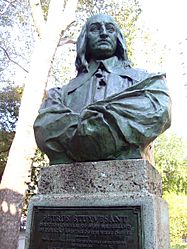
Historian Eleanor Bruchey said that Peter Stuyvesant was a difficult man in a difficult job. He was quick-tempered and confident. He wanted to rule strongly and fix the company's problems. But the company only cared about trade profits. They did not focus on bringing in more people or building local government. Stuyvesant's past leaders had been dishonest. So, people did not respect the governor's role.
The colonists often complained about his strict rules. They wanted more local self-government. His lack of religious tolerance also caused problems. Most colonists did not share his narrow views.
Stuyvesant and his family owned a lot of land in New Amsterdam. His name is still used for many places in Manhattan. These include the Stuyvesant Town housing complex and Stuyvesant High School. There is also Stuyvesant Square, a park. His farm was called the "Bouwerij," which means "farm" in Dutch. This gave the name to the Manhattan street and neighborhood called "The Bowery."
The neighborhood of Bedford–Stuyvesant, Brooklyn also keeps his name. Other places named after him are Stuyvesant and Stuyvesant Falls. These are in Columbia County, New York. The Dutch Reformed Church is still important there.
A statue of Peter Stuyvesant by J. Massey Rhind is in Bergen Square in Jersey City. It was put there in 1915. This marked 250 years since the Dutch settled there. A Liberty Ship from World War II, the SS Peter Stuyvesant, was also named after him.
See also
 In Spanish: Peter Stuyvesant para niños
In Spanish: Peter Stuyvesant para niños
- Adriaen van der Donck
- History of the Jews in the Netherlands
- Colonial history of the United States
- Dutch colonization of the Americas
- Dutch Empire
- Peter Minuit
- List of colonial governors of New York


